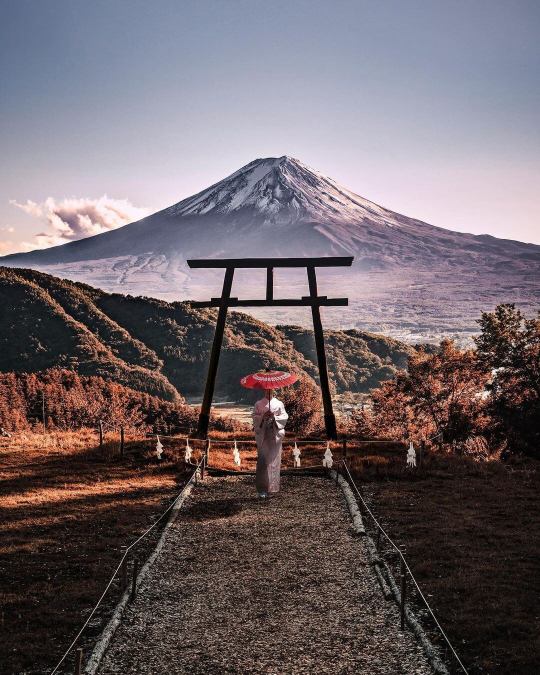#kawaguchi asama shrine
Text

A Glimpse into Torii Gate Architecture at Kawaguchi Asama Shrine
Location: Fujikawaguchiko, Yamanashi Pref., Japan
Timestamp: 15:24・2024/03/20
Pentax K-1 II + DFA 28-105mm F3.5-5.6 + CP
28 mm ISO 100 for 1/200 sec. at ƒ/7.1
The large torii gate warmly welcomes visitors to the cedar-tree lined approach to the Kawaguchi Asama Shrine. Many of these trees are 800 years old and have stood tall since the Kamakura Period (1185–1333).
Historical records indicate the original torii gate was built to a height of approximately 13 m (42.65 ft) in 1688, and rebuilt in 1697 to a height of 16.4 m (53.80 ft).
The current torii gate was built of concrete in 1965 and stands approximately 18 m (59.05 ft) high. One of the cornerstones of the original gate remains at the right foot of the current gate.
Discover more about the fascinating history and symbolism of the torii gate at Kawaguchi Asama Shrine. Delve into the meaning behind the inscription on the gate, explore the intricate design elements of this shrine and similar types, and provide a glossary of key Japanese words used in torii gate construction. Plus, find Google Maps links for easy navigation and additional source materials for further reading. Read the full write-up here: https://www.pix4japan.com/blog/20240320-torii
#風景写真#山梨県#大鳥居#河口淺間神社#pix4japan#pentax_dfa28105#pentaxk1mkii#landscape photography#Japan#Yamanashi Prefecture#Kawaguchi Asama Shrine#torii gate
21 notes
·
View notes
Link
1. Kawaguchi Asama Shrine – Yamanashi
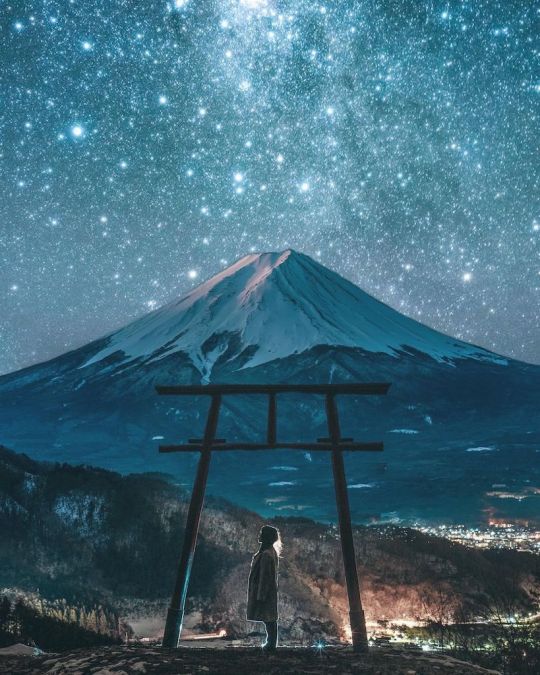
Image Credit : @kenkeno215
After a 10-day long devastating eruption of Mount Fuji in 864, Kawaguchi Asama Shinto Shrine was built the following year to worship the goddess of Mount Fuji, Asama no Okami (浅間大神).
Every year, on 25th April and 28th July, the traditional chigo no mai (稚児の舞; children’s dance) is performed to appease the god. Children aged 11 to 12 years old, typically girls, dance in front of the shrine to the tune of flutes.
2. Shirahige Shrine – Shiga

Image credit: @shirahigesup
Situated in Lake Biwa, the largest freshwater lake in Japan. Shirahige Shrine is dedicated to Sarutahiko of Mikoto, the god of longevity.
After sunset, the torii gate is lit up for 2 hours on weekends and even longer on special days such as New Year’s Eve.
3. Futami Okitama Shrine – Ise

Image credit: @kenken710
Popular among newlyweds and couples, Futami Okitama Shrine is the place to be for those seeking blessings in their love life and marriage.
The Meoto Iwa (夫婦岩), or “wedded rocks” are inseparable pair of rocks – the big one representing the husband and the small one the wife – are connected by a shimenawa (sacred rice straw rope).
4. Motonosumi Shrine – Yamaguchi
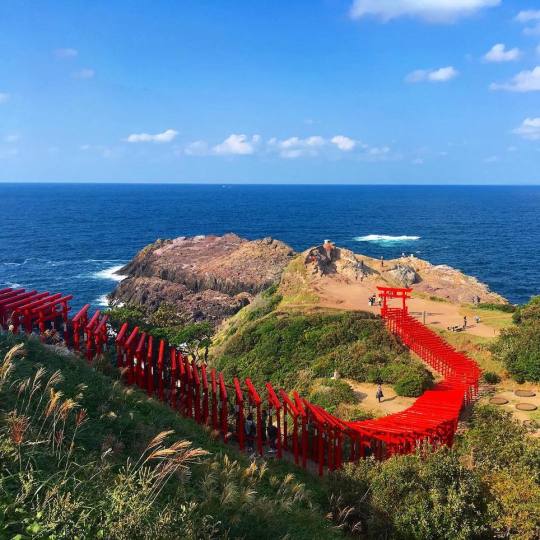
Image credit: @muracome
Legend has it that in 1955, the spirit of a white fox instructed a local to build a shrine. Obliging the deity’s request, the man built and lined 123 red torii gates along the edge of a cliff.
Today, the shrine attracts visitors who are hoping to pray for wealth, studies, pregnancy, and even fishing.
5. Takaya Shrine – Kagawa
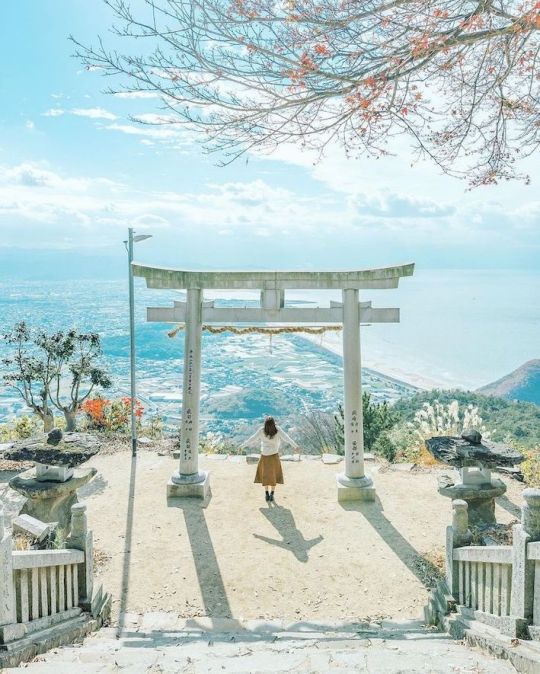
Image credit: @mitwo_310_dayo
Dubbed the “torii in the sky”, Takaya Shrine in Kagawa Prefecture sits atop the 404m-tall Mount Inazumi. The torii gate of the main shrine overlooks a panoramic view of the city of Kanonji and Seto Inland Sea.
6. Sakurai Futamigaura – Fukuoka

Image credit: @sai_._ias
While the Meoto Iwa in Ise is better known for its sunrise views, travellers flock to Sakurai Futamigaura in Fukuoka to watch the sun set.
Every May, a ceremony is held during low tide to change the shimenawa. As the rope measures over 30m in length – almost half the width of a football field – and weighs over 900kg, as many as 50 people are mobilized for the switch.
7. Udo Shrine – Miyazaki

Image credit: @tate.masa
The cliffside Udo Shrine is perched on the rocky Nichinan Coast, south of Miyazaki City, surrounded by magnificent waves.
Legend has it that Toyotama-hime, a goddess of the dragons and sea, went into labour on land. A maternity hall was built in a hurry, in a sacred cave, and Toyotama-hime gave birth to Ugayafukiaezu no Mikoto, who was later enshrined as a deity.
Today, the birthplace is better known as the main shrine of Udo Shrine. Thanks to its history, a visit to the shrine is considered to be beneficial for couples trying to conceive, and expecting mothers praying for a safe pregnancy.
8. Amano Iwato Shrine – Miyazaki

Image credit: @nobphotoo
According to Japanese mythology, the sun goddess Amaterasu hid in this cave after a destructive battle with her brother. Refusing to come out of the cave, her isolation cast darkness over the world. It was only when the other gods and goddesses came together to devise a plan that Amaterasu was lured out, returning light to the world.
The period between November to February is the prime time to visit as that’s when the annual Takachiho Kagura – a shinto ritual consisting of festive folk dances – is held. The main event is held on 22nd and 23rd November, but the dances are performed every night between November and February.
9. Kuratake Shrine – Kumamoto

Image credit: @ryh.photo
The remote shrine was built to protect the sea and to pray for the safety of fishermen. For that reason, you’ll find a ship-shaped vessel filled with empty shells of mina, a shellfish native to the sea of Amakusa, in front of the shrine.
Due to a flood in 1972, the mountain trail was closed to the public and only reopened in 2012. As a result, the shrine completely went under the radar, privy to only the most savvy of locals and budding photographers.
10. Naminoue Shrine – Naha
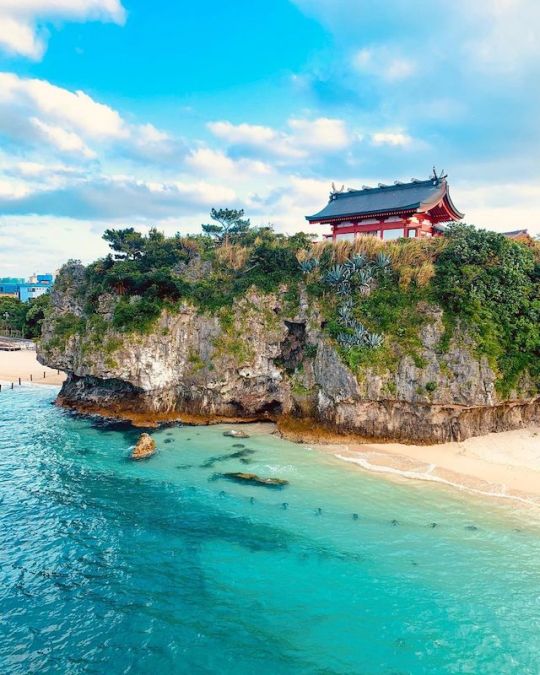
Image credit: @cliff511299
As the most prestigious shrine in Okinawa, Naminoue Shrine is widely revered as one of the 8 special Ryukyu shrines since the Ryukyu Kingdom era.
Affectionately nicknamed “Nanmin-san” by Okinawan natives, Naminoue Shrine is a power spot that can grant blessings for everything, from matchmaking to pest control. The date of the shrine’s founding is unknown, but it is believed that the roots can be traced back to when locals prayed to Nirai Kanai (ニライカナイ) – god’s world in the distance of the sea – for abundant harvests.
#underrated places in japan#kawaguchi asama shrine#yamanashi#mount fuji#shirahige shrine#shiga prefecture#lake biwa#futami okitama shrine#ise#motonosumi shrine#yamaguchi#takaya shrine#kagawa#sakurai futamigaura#fukuoka#udo shrine#miyazaki#amano iwato shrine#kuratake shrine#kumamoto#naminoue shrine#naha#okinawa#kyushu#shikoku#chugoku#kansai#chubu#japan#shinto shrine
14 notes
·
View notes
Text
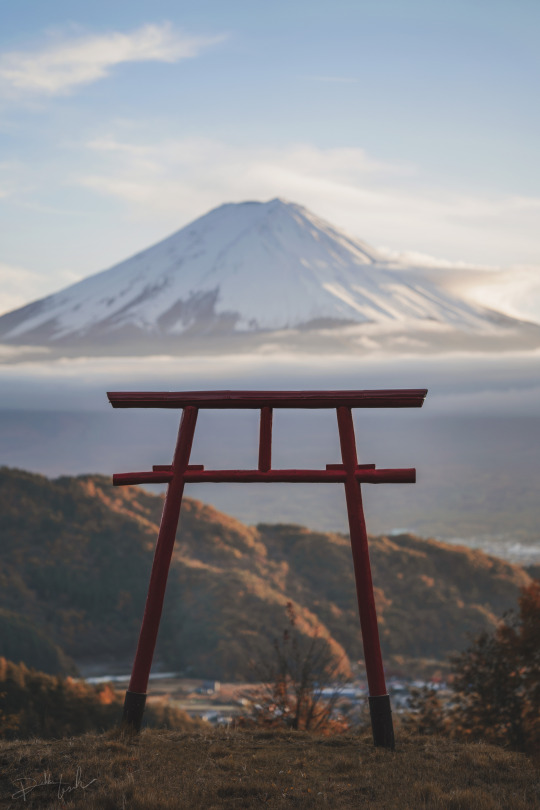
Kawaguchi Asama Shrine view of Mount Fuji. I love traveling so much.
#japan#photography#rikkichankawaii#shrine#kawaguchi#gorgeous#travel#asama#torii#gate#tenkunotorii#photographer#travel photography#landscape#fuji#mount#mountains#mtfuji
11 notes
·
View notes
Photo
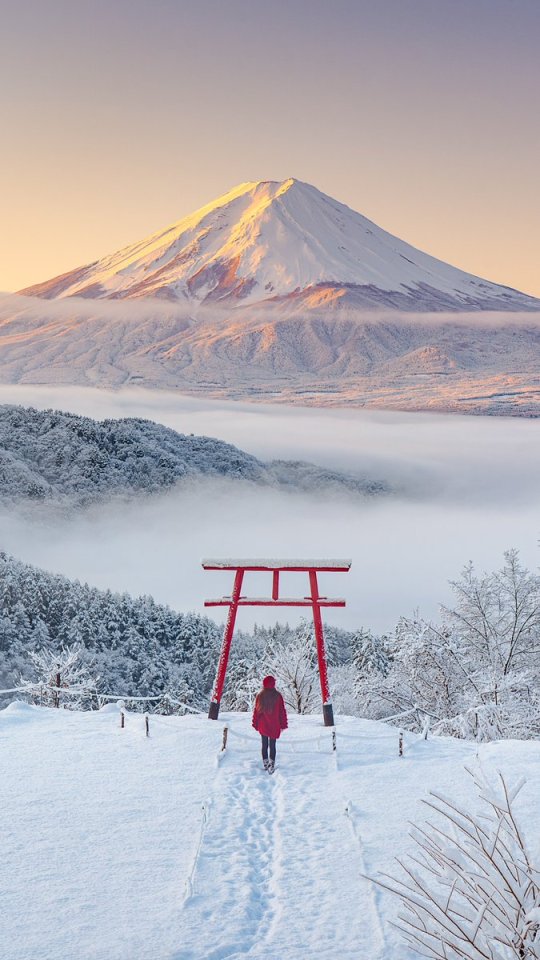
Kawaguchi Asama Shrine and Mt Fuju. Photography by Kyoko Ueda(旅行、絶景好き)
@kyoko1903
415 notes
·
View notes
Photo

miyazaki_japan
“ Kawaguchi Asama Shrine is a shrine that was built the following year to enshrine the god of Mt. Fuji, Asama Omikami, in order to calm the eruption of Mt. Fuji in 864 (Jōgan 6). “
6 notes
·
View notes
Photo
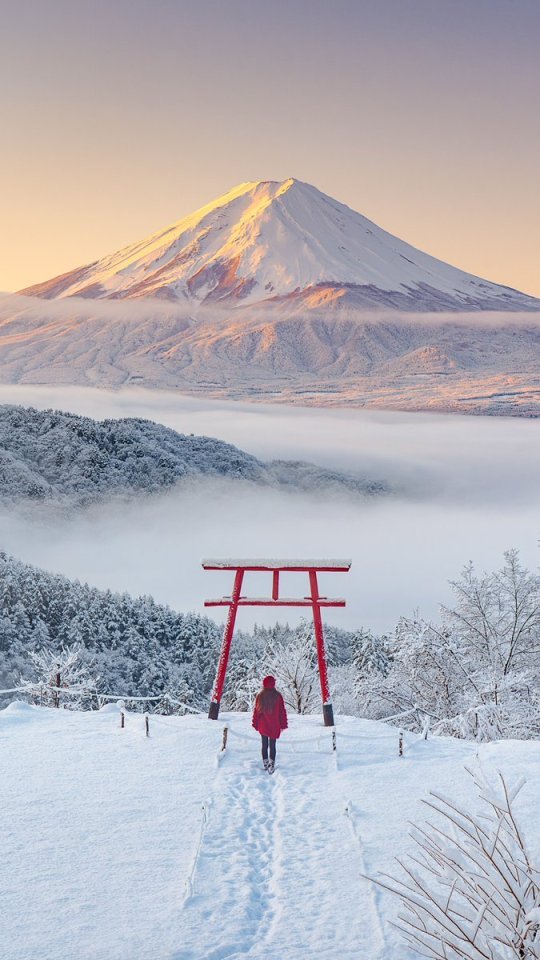
Kawaguchi Asama Shrine and Mt Fuju. Photography by Kyoko Ueda(旅行、絶景好き)
@kyoko1903
Source :
twitter.com
0 notes
Photo
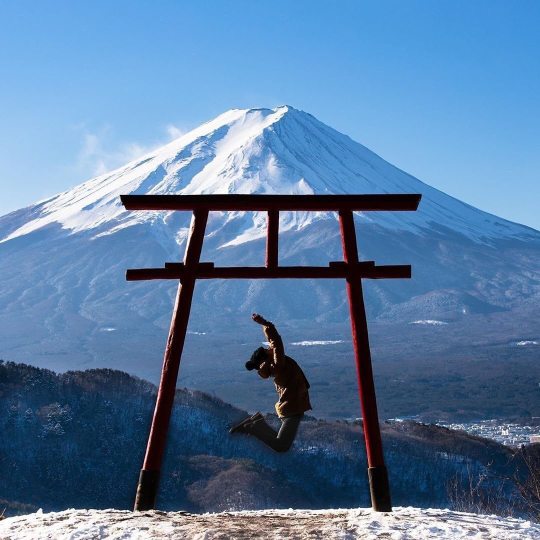
I❤️🇯🇵 #repost @visitjapanjp ・・・ Kawaguchi Asama Shrine is dedicated to the goddess of Mt. Fuji and is surrounded with huge cedar trees. Don't miss the view of the mountain! Thanks to the talented @mc.s_ptgrp for capturing this snowy view! Follow @visitjapanjp for your daily dose of Japan travel inspiration. Tag your own photos of Japan with #visitjapanjp to give us permission to repost! #japan #japantravel #visitjapanjp #visitjapan #travelspiration #traveling #travelgram #instatravel #travelpic #doyoutravel #japantrip #landscapes #naturephotography #japanlovers #seetheworld #experiencejapan #discoverjapan #asamashrine #kawaguchiasamashrine #yamanashi #mtfuji #torii #toriigate #mountainlife https://www.instagram.com/p/B8fD9X-grVk/?igshid=1dgja4k88v6mz
#repost#visitjapanjp#japan#japantravel#visitjapan#travelspiration#traveling#travelgram#instatravel#travelpic#doyoutravel#japantrip#landscapes#naturephotography#japanlovers#seetheworld#experiencejapan#discoverjapan#asamashrine#kawaguchiasamashrine#yamanashi#mtfuji#torii#toriigate#mountainlife
0 notes
Photo
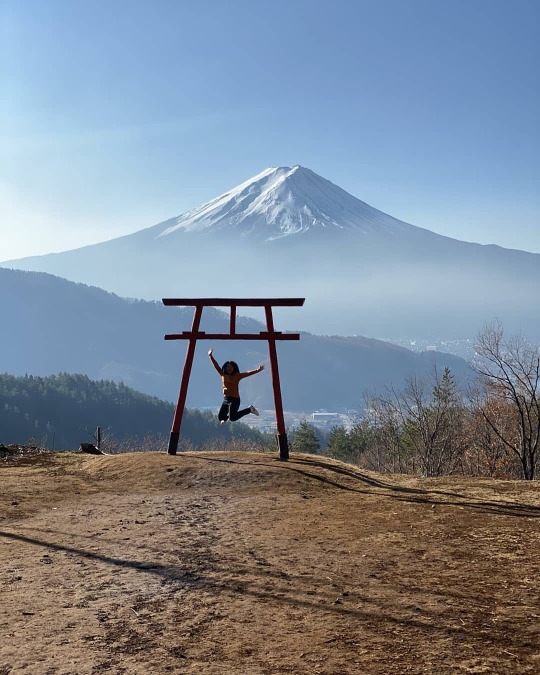
Mission complete (at Kawaguchi Asama Shrine) https://www.instagram.com/p/B6CHX7opFt-qG0v3g4D-e_VfjgTG_ww2NXzrOA0/?igshid=10bcu4cny4jj
0 notes
Link
Sacred Ancient Trees at Shinto Shrine
Location: Fujikawaguchiko, Yamanashi Pref., Japan
Timestamp: 15:11・2024/03/20
Pentax K-1 II + DFA 28-105mm F3.5-5.6 + CP
28 mm ISO 6400 for 1/125 sec. at ƒ/8
Situated approximately 20 meters (65 ft) to the east of the Kawaguchi Asama-Jinja Shrine in Yamanashi Prefecture, Japan, stand two ancient trees known as the Futahashira-Sugi (両柱杉) cedars. Among the renowned seven cedar trees at the shrine, the cedar on the right reaches a towering height of approximately 47.5 meters (156 ft), making it the tallest.
The origin story of these two trees is fused with the belief that the roots of the right tree gradually grew and intertwined with those of the smaller tree on the left, symbolizing a physical and metaphorical union. This union has transformed them into revered entities, worshiped for their association with successful matchmaking, fertility, and safe childbirth. Their significance is further emphasized by the shimenawa rope, signifying their status as revered landmarks.
Check out the full write-up, a concise 1-minute read, which includes a glossary, Google Maps links, and links to source materials for further reading (https://www.pix4japan.com/blog/20240320-trees).
#風景写真#山梨県#両柱杉#河口淺間神社#pix4japan#pentax_dfa28105#pentaxk1mkii#landscape photography#Japan#Yamanashi Prefecture#Kawaguchi Asama-Jinja Shrine
15 notes
·
View notes
Link
Kawaguchi Asama-Jinja Shrine
Location: Fujikawaguchiko, Yamanashi Pref., Japan
Timestamp: 15:09・2024/03/20
Pentax K-1 II + DFA 28-105mm F3.5-5.6 + CP
28 mm ISO 2500 for 1/125 sec. at ƒ/8
Situated just 1.28 km (4,186 ft) from the shores of Lake Kawaguchi, which lies northeast of Mt. Fuji, Kawaguchi Asama Shrine boasts an ancient history dating back to the Jogan Eruption of Mt. Fuji in 864. The shrine is oriented toward the source of the lava flow rather than Mt. Fuji’s peak, to appease the volcano deity known as Asama or Sengen. Establishment of this shrine marked the beginning of the building up of shrines on the northern flank of Mt. Fuji, which centuries later, would welcome thousands of lay pilgrims every year.
The architecture of Kawaguchi Asama Shrine follows the wari-haiden ("divided worship hall") style typical of Sengen shrines. This style features two distinct structures connected by an open space beneath a single roof. In my accompanying photo, you can see a prime example of wari-haiden: the expansive main worship hall (haiden) on the left and the sanctuary housing the shrine's central object of veneration (honden) on the right, both unified under the same roof.
The standout feature of this shrine that immediately captivated my attention is its remarkable nagare-zukuri (流造) design, showcased in the roofs of both the worship hall and the sanctuary. I'm also fascinated by the metal fittings positioned at the ends of the rafters that not only serve as decorative elements but also play a functional role in safeguarding the structural components from weather-related wear and tear.
For a deeper delve into the shrine's history and architecture, including Google Maps links, source materials, and additional references, see the full write-up, which offers a concise 3-minute read (https://www.pix4japan.com/blog/20240320-asama).
#風景写真#山梨県#河口淺間神社#pix4japan#pentax_dfa28105#pentaxk1mkii#landscape photography#Japan#Yamanashi Prefecture#Kawaguchu Asama Shrine
5 notes
·
View notes
Text
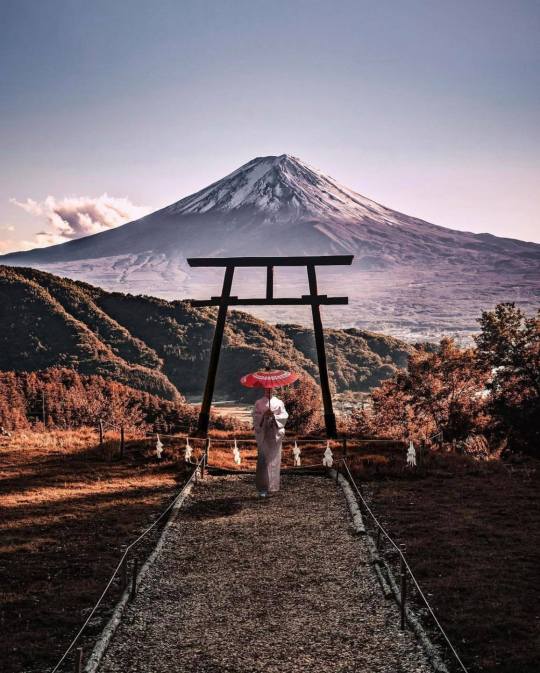
Torii in the sky Kawaguchi Asama Shrine is a shrine that was built the following year to enshrine the god of Mt. Fuji、Asama Omikami、in order to calm the eruption of Mt. Fuji in 864
40 notes
·
View notes

